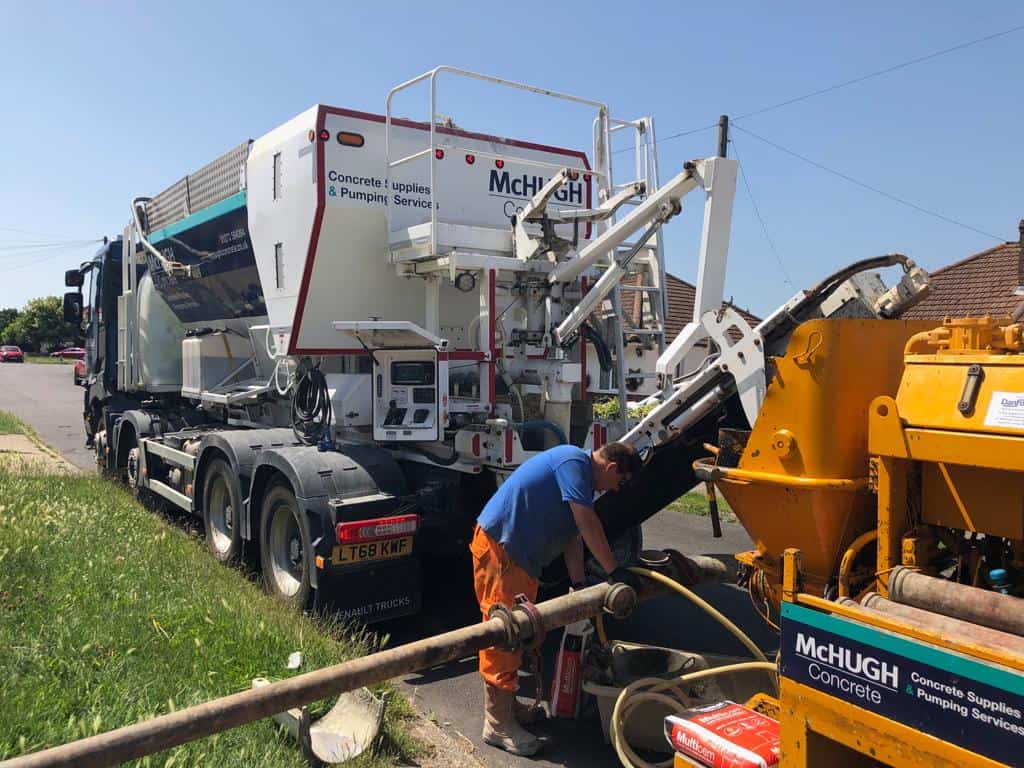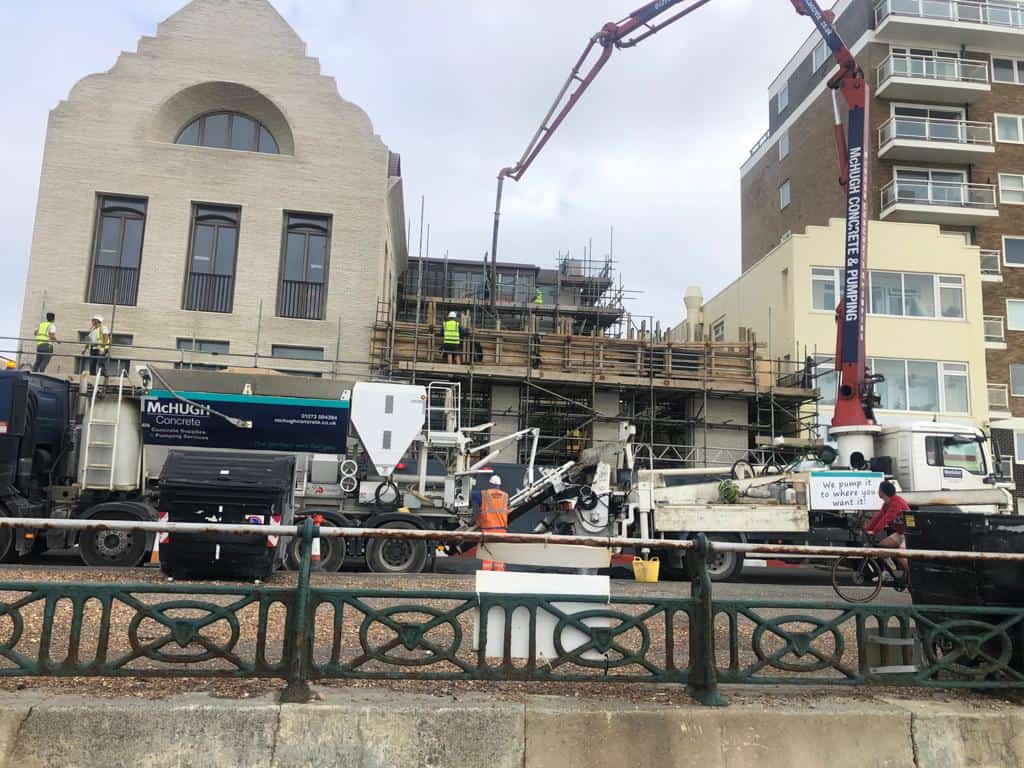In this article, we explain what a concrete pump is, with specific focus on Line and Boom pumps; what they are and how they work.
Line pumps

What is a Line pump? Line pumps are typically mounted to a truck or trailer and have steel or flexible hoses attached to them that carry the concrete to the pump site itself.
Line pumps are especially useful when a concrete mixer truck itself can’t get close enough access to the pump site. With the use of hoses, the concrete can be led to the required area around buildings from front to back, or even through buildings themselves!
Our static Line pumps can push concrete a distance of over 100 metres, directly into your prepared area, ready for you to level.
Line pumps are used for all sorts of jobs, both commercially and domestically and are a great solution regardless of how simple or difficult access is. It makes sense to use a pump for your job, especially when you consider that a 6m3 pour is the equivalent of 150 barrow loads, which would take four people a minimum of 2.5 hours to move!
Generally, Line pumps pump lower volumes of concrete than boom pumps, which are more commonly – but not always – used on larger builds, which brings us nicely onto the definition of a Boom pump and what it does.
Boom pumps

What is a Boom pump? Put simply, a Boom pump is attached to a truck / trailer and utilises an articulated robotic arm (known as a boom), to enable accurate delivery of concrete.
Boom pumps are able to pump extremely high volumes of concrete. Our 24m long boom pump can overcome even the most troublesome access situations, be it access to the rear of a property or the need to pump concrete above ground level, for example in the construction of blocks flats.
Boom pumps can even be used to pump concrete from one side of a body of water to another, as shown in this job we did at Shoreham Port:
Whatever your requirements, the team at McHugh Concrete will be happy to discuss your needs and to organise a site survey to advise on the best option for you, so don’t delay! Give us a call on 01273 594394.
Thanks for reading.